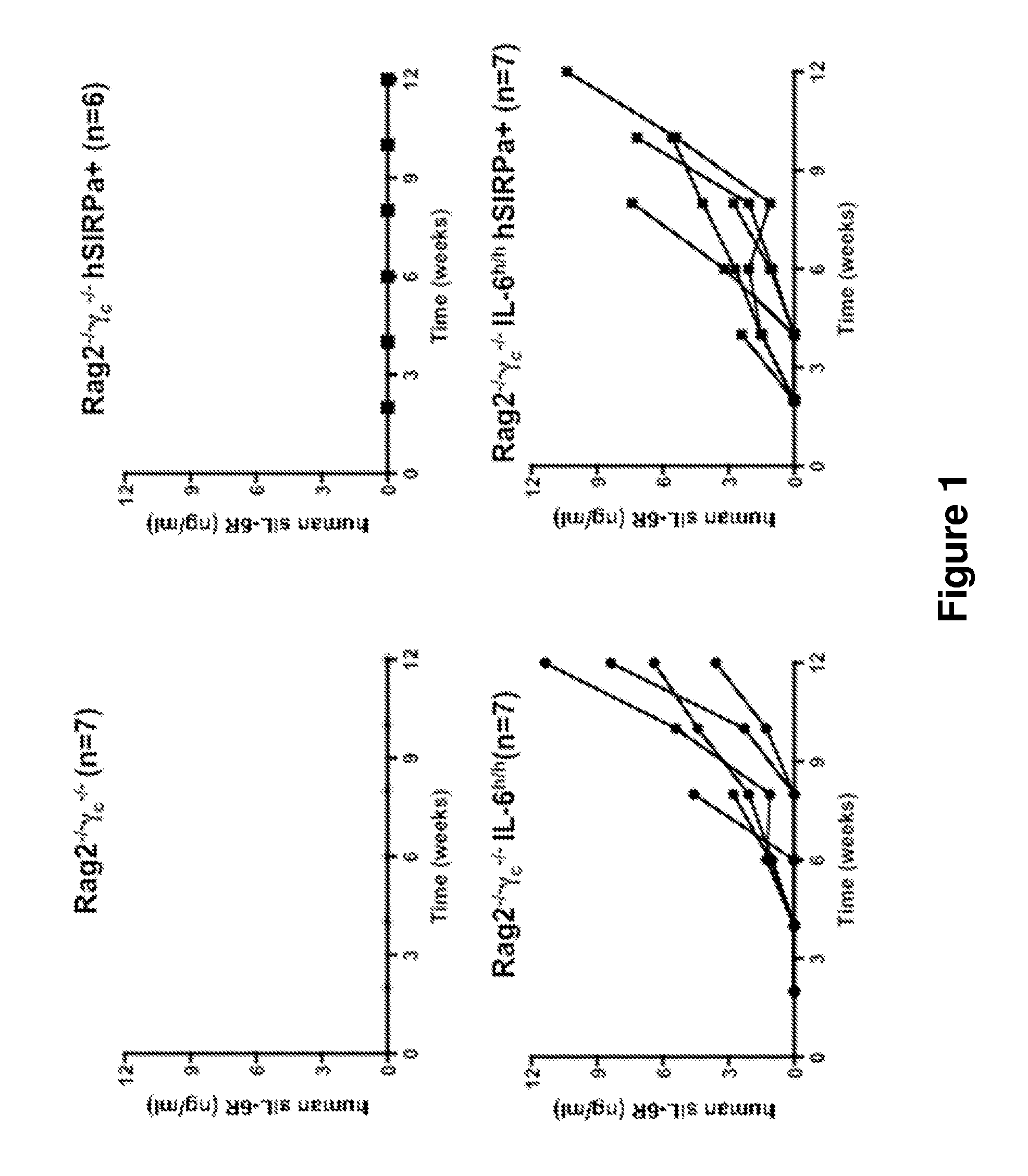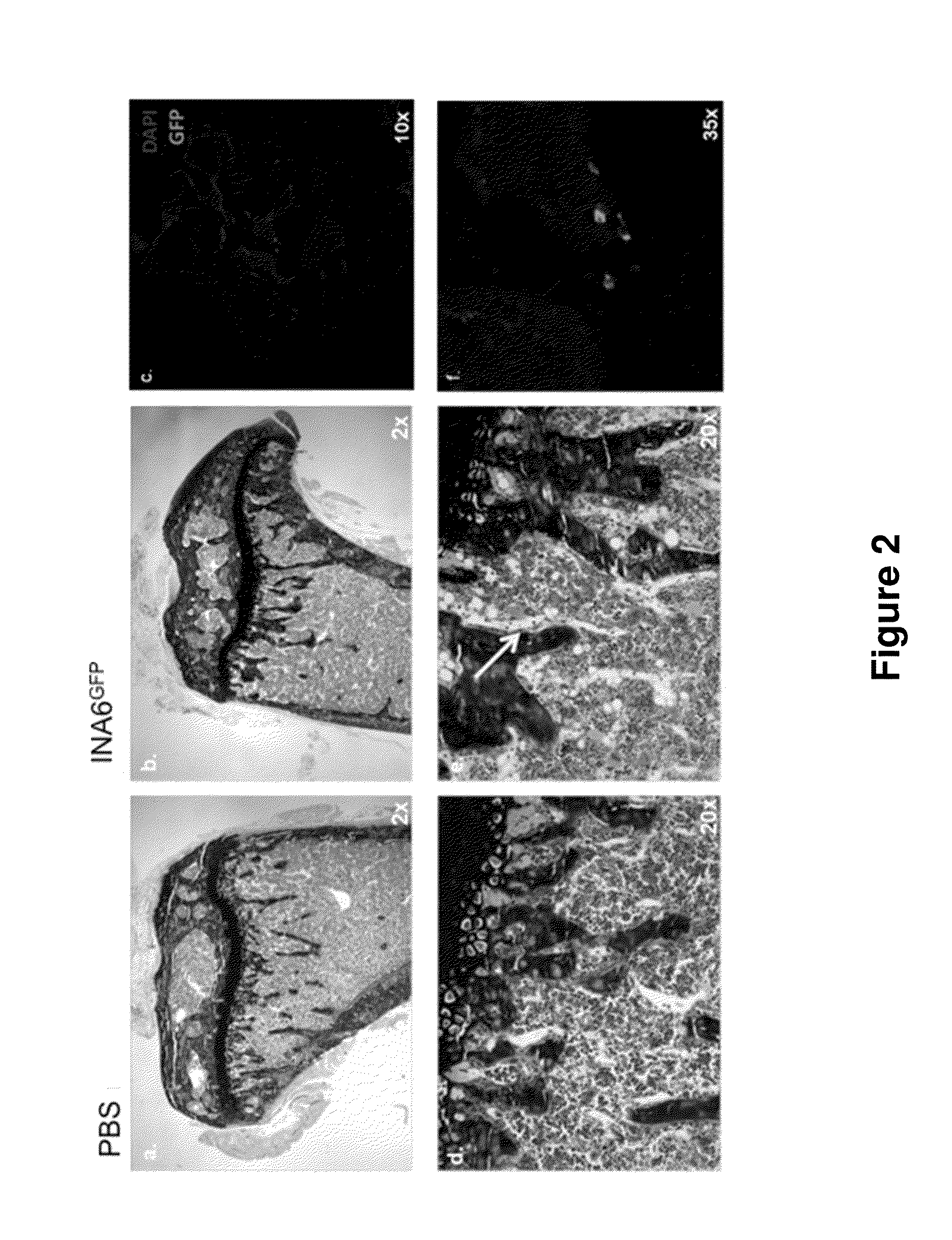Genetically modified non-human animals and methods of use thereof
a technology of non-human animals and genetic modification, applied in the field of biomedical research, can solve the problems of rare representation of human disease genetic complexity and clinicopathologic characteristics, and achieve the effect of reducing the viability and/or the rate of proliferation of human hematopoietic cells
- Summary
- Abstract
- Description
- Claims
- Application Information
AI Technical Summary
Benefits of technology
Problems solved by technology
Method used
Image
Examples
experimental examples
[0165]The invention is further described in detail by reference to the following experimental examples. These examples are provided for purposes of illustration only, and are not intended to be limiting unless otherwise specified. Thus, the invention should in no way be construed as being limited to the following examples, but rather, should be construed to encompass any and all variations which become evident as a result of the teaching provided herein.
[0166]Without further description, it is believed that one of ordinary skill in the art can, using the preceding description and the following illustrative examples, make and utilize the compounds of the present invention and practice the claimed methods. The following working examples therefore, specifically point out the preferred embodiments of the present invention, and are not to be construed as limiting in any way the remainder of the disclosure.
example 1
Genetic Humanization of Cytokine Genes Enables Engraftment of Mice with Human Multiple Myeloma Cells
[0167]The data described herein demonstrate that the genetically modified non-human animals described herein represent a novel in vivo animal model for multiple myeloma.
Materials and Methods
[0168]Mice.
[0169]Humanized IL-6 knock-in mice were generated by replacing 6.8 kb of the murine IL-6 gene locus with a 4.8-kb human IL-6 gene sequence containing exons 1 through 5 including 3′ untranslated region of the human IL-6 gene.
[0170]Briefly, a targeting construct for replacing the mouse with the human IL-6 gene in a single targeting step was constructed using VELOCIGENE® genetic engineering technology (see, Valenzuela et al. (2003) High-throughput engineering of the mouse genome coupled with high-resolution expression analysis, Nature Biotech, 21(6):652-659). Mouse and human IL-6 DNA were obtained from bacterial artificial chromosome (BAC) RPCI-23 clone 368C3, and from BAC CTD clone 2369M23...
example 2
Genetic Humanization of the IL-6 Gene Enables Engraftment of Mice with Human Hematopoietic Cells
Materials and Methods
[0193]Mice.
[0194]The humanized IL-6 KI mouse was generated as described above. The chimeric mice were first bred with BALB / c mice and then backcrossed in order to obtain offspring with hIL-6 in homozygosity. Mice with the same mixed BALB / c×129 background were used as control.
[0195]Newborn pups (within first day of life) were sublethally irradiated by X-ray irradiation in a 4-hour interval with 2×150cGy. Four hours after the irradiation the mice were injected with 1−2×105 CD34+ fetal liver (FL) cells in 20 μl of PBS into the liver by using a 30-gauge needle (Hamilton Company, NV, USA). Mice were weaned at 3 weeks of age. The mice were maintained under specific pathogen-free conditions and all experiments were performed in compliance with Yale Institutional Animal Care and Use Committee protocols.
[0196]Analysis of Human and Mouse Hematological Cell Populations.
[0197]The...
PUM
| Property | Measurement | Unit |
|---|---|---|
| volume | aaaaa | aaaaa |
| resistance | aaaaa | aaaaa |
| drug resistance | aaaaa | aaaaa |
Abstract
Description
Claims
Application Information
 Login to View More
Login to View More - R&D
- Intellectual Property
- Life Sciences
- Materials
- Tech Scout
- Unparalleled Data Quality
- Higher Quality Content
- 60% Fewer Hallucinations
Browse by: Latest US Patents, China's latest patents, Technical Efficacy Thesaurus, Application Domain, Technology Topic, Popular Technical Reports.
© 2025 PatSnap. All rights reserved.Legal|Privacy policy|Modern Slavery Act Transparency Statement|Sitemap|About US| Contact US: help@patsnap.com



